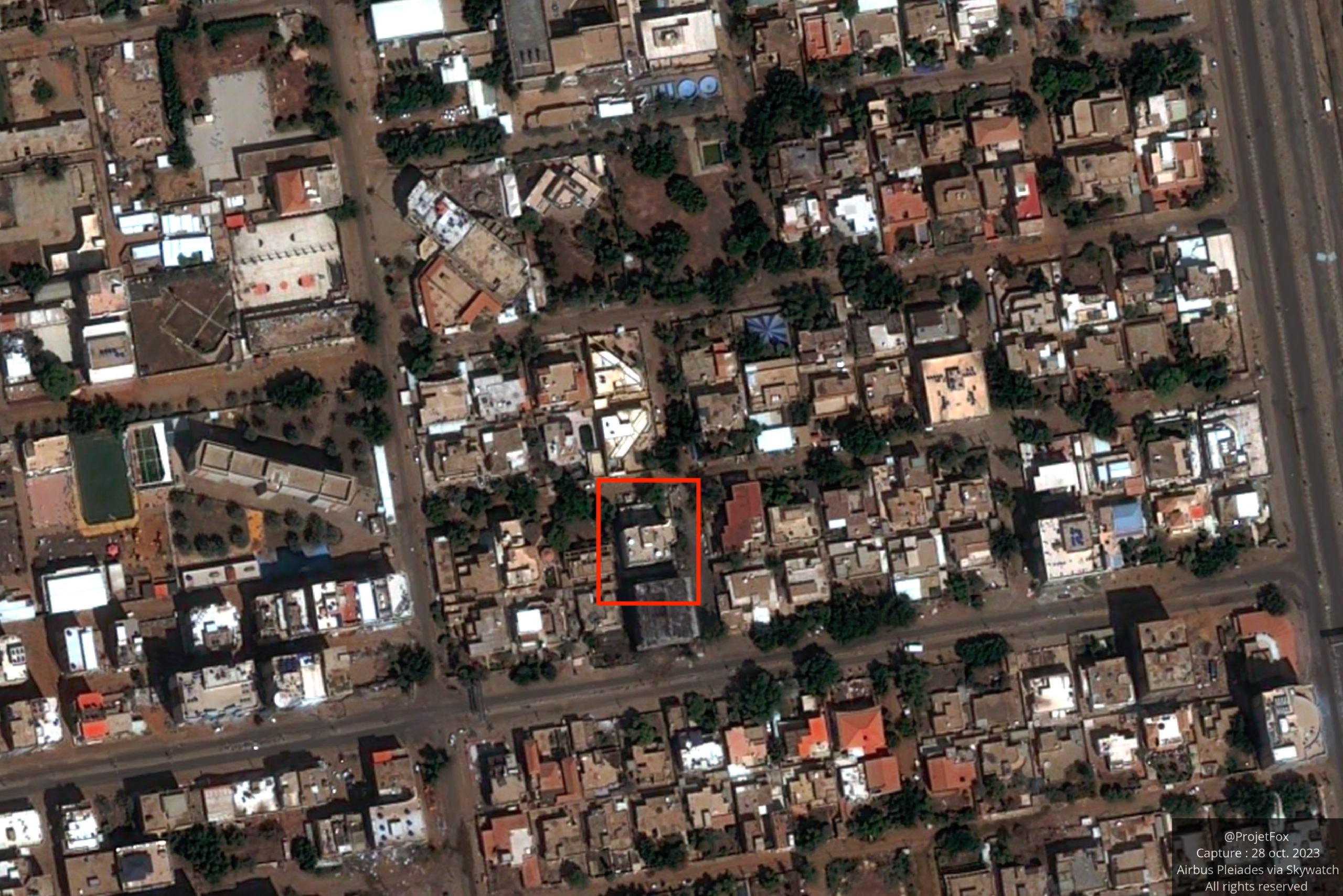Bombing of the embassy of France in Sudan
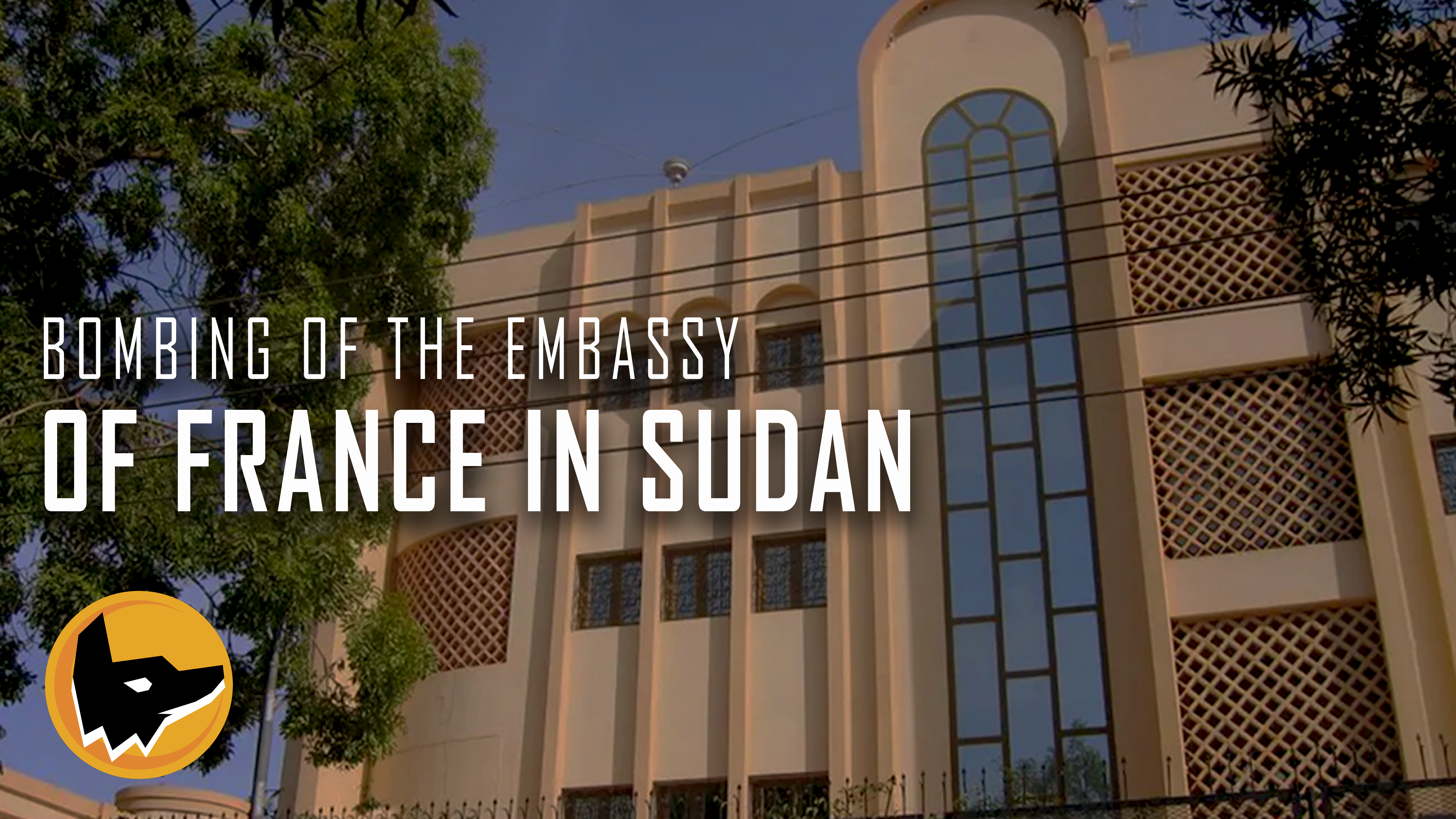
On October 23, the rebel Rapid Support Forces (RSF), at war with the regular army since April 15, announced that an aerial bombardment had hit the French embassy in Khartoum, causing “significant damage”. Although the building, which had been emptied of its staff, was indeed hit, the damage was only “slight”. Here’s a look back at the process of verifying this information.
On April 15, 2023, General Hemeti’s RSF attempted to overtake the regular army of General Al-Burhan, de facto ruler of the country since the coup d’état of 2021. Intense fighting has since taken place throughout the country, as far away as Darfur. Several truces were put in place to facilitate the delivery of humanitarian aid, but these were scarcely respected. Fighting continued, particularly in the capital Khartoum, including air strikes and artillery fire. On several occasions in recent months, bombardments of markets and residential areas in Khartoum have killed dozens of civilians. All areas of the capital have suffered the consequences of these deadly confrontations (the latest UN estimates put the death toll at over 9,000 in 6 months), but the area around the airport, located in the heart of the city, has certainly been the scene of the most violent clashes.
This area is home to the majority of institutional buildings, including various ministries, the headquarters of the three army corps, and numerous embassies, including the French embassy, located to the south-west of the airport.
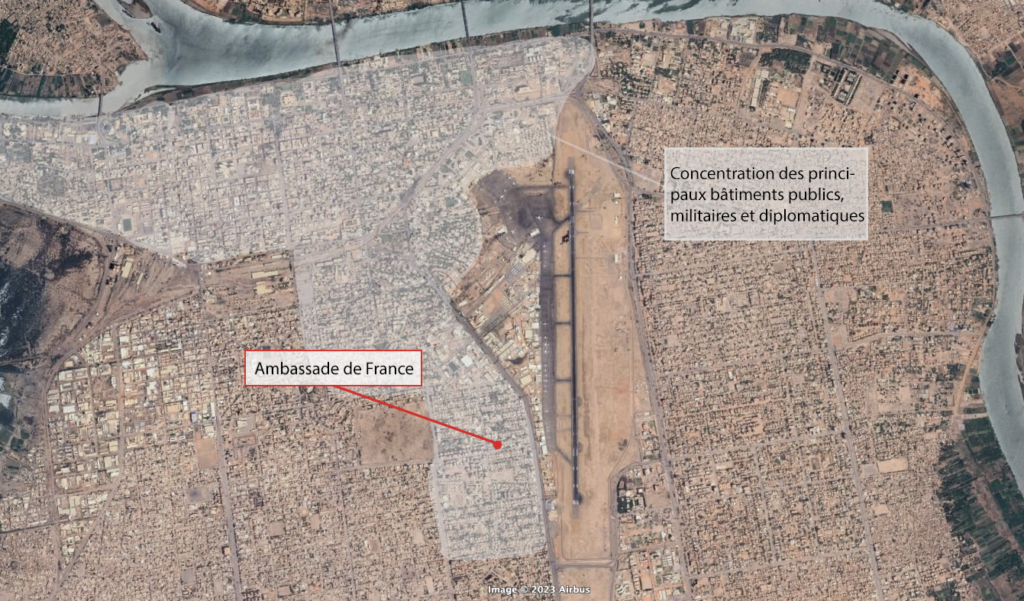
Since April 25, the French embassy in Khartoum has been closed due to fighting in the capital. All staff have been evacuated, and diplomatic activities are now being carried out from Addis Ababa in neighboring Ethiopia.
On October 23, 2023, a communiqué issued by the Rapid Support Forces (RSF) in Arabic and English announced “an aerial bombardment of the French embassy, causing extensive damage to the building”, accusing the regular army of being responsible.
MEDIA STATEMENT
— Rapid Support Forces - قوات الدعم السريع (@RSFSudan) October 23, 2023
The Sudanese Armed Forces (SAF) and its extremist backers linked to the former regime continue to violate international law and commit grave human rights abuses – most recently by air bombing the French Embassy in Khartoum, causing substantial damage to the…
This is not the first time that RSF has announced the bombing of an embassy in Khartoum. Three weeks earlier, the rebels announced that the Ethiopian embassy, located less than 500 meters from the French embassy, had been “attacked” by soldiers of the Sudanese armed forces and associated militiamen.
Following the RSF press release of October 23, neither the Sudanese army nor the French authorities have officially reacted.
What’s more, after some research, no photos or videos showing any damage to the French embassy have been posted on social networks. Since the first days following the outbreak of the conflict, it has often been difficult to establish the facts following an event taking place in Khartoum and Sudan in general, as the means of communication have become restricted.
Verification by satellite images
Since no confirmation or denial has been issued by the authorities or a witness on the spot, open-source verification may be appropriate. Probably the best way to find out about a possible major bombing of a building is to look at satellite images.
Several image resolutions have been used to try and confirm the bombing. Firstly, low-resolution images. Available free of charge on Sentinel Hub, these images are updated each time the Sentinel satellites pass over each area of the globe, on average every 3 days.
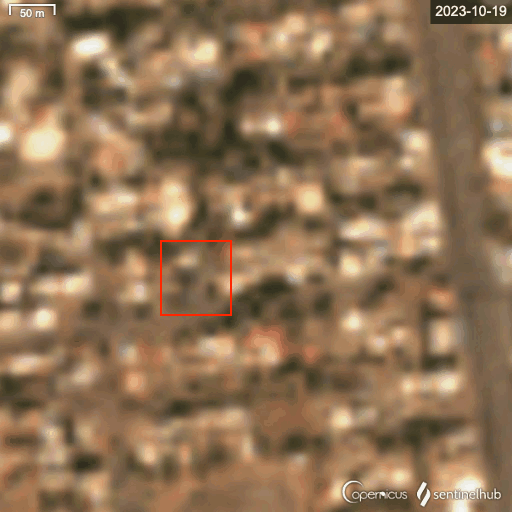
In this satellite comparison between October 19 and 24, we can see that a black spot, which could look like a burnt area, has appeared where the French embassy is located. Unfortunately, the resolution is far too low to determine the origin of this stain. It is therefore necessary to upgrade to a higher resolution.
On October 26, a satellite with a lower resolution (1.5 meters) passed over the area, unfortunately covered by clouds and unable to see the embassy. An image was finally available for purchase on October 28. With a resolution of 0.5 meters, it was now much easier to make out details.
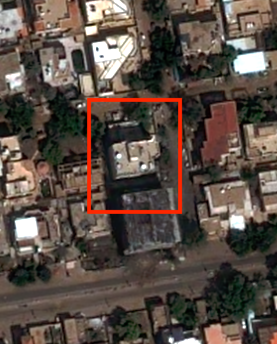
Thanks to this image, it is possible to determine that little damage has occurred around the embassy. Clearly, there was no major fire, as the low-resolution images might have suggested.
The limits of OSINT for verifying an information
While this satellite image shows that the French embassy is still standing, it does not rule out the possibility that it may have been bombed.
Indeed, while it is unlikely that a bombardment caused “major damage” to the building, as claimed by the RSF (the roof being entirely intact and no debris visible around the building), it is not impossible that a shell hit one of the building’s facades, not visible on the satellite image.
In order to be able to confirm or deny this information with certainty, it will then be necessary to try to obtain an official response. In the absence of an official response from France, the Fox Project contacted the French authorities. A source in the French Ministry of Foreign Affairs confirmed to the Projet Fox that the French embassy in Khartoum had indeed been hit “by mistake” by a bombing raid on October 23. Damage to the empty embassy is assessed by the authorities as “slight”.
However, no images of the damage have been transmitted, once again a sign of the difficulty of obtaining information on the spot. It will also be very difficult to determine the origin of the bombing, if an investigation is ever launched.
According to the Sudan War Monitors map, which shows the positions held by the regular army and the Rapid Support Forces, the quarter in which the French embassy is located is controlled by the rebels. It should be noted, however, that the regular army controls most of the institutional quarter, less than 3 kilometers from the embassy.
While the hypothesis of a shot coming from this area controlled by the regular army towards the rebel-held quarter where the French embassy is located seems coherent, it cannot be confirmed. Nor is it possible to determine which target was really intended, as the embassy was hit “by mistake”.

Prospects for peace are slim in this conflict, which is about to enter its 7th month of war. A war that receives very little media coverage, and for which access to reliable information is particularly difficult, even with open-source research techniques as in the case of this event.
Soudan : Plus de 20 civils ont été tués dimanche après la chute d’un obus sur un marché à Omdourman, ville située proche de Khartoum.
— Neurone Intelligence (@NeuroneIntel) November 6, 2023
La veille, au moins 15 civils ont été tués par « des obus tombés sur leurs maisons » dans la capitale.
(RFI / AFP / Source médicale locale) pic.twitter.com/qGqhkYwJXM
